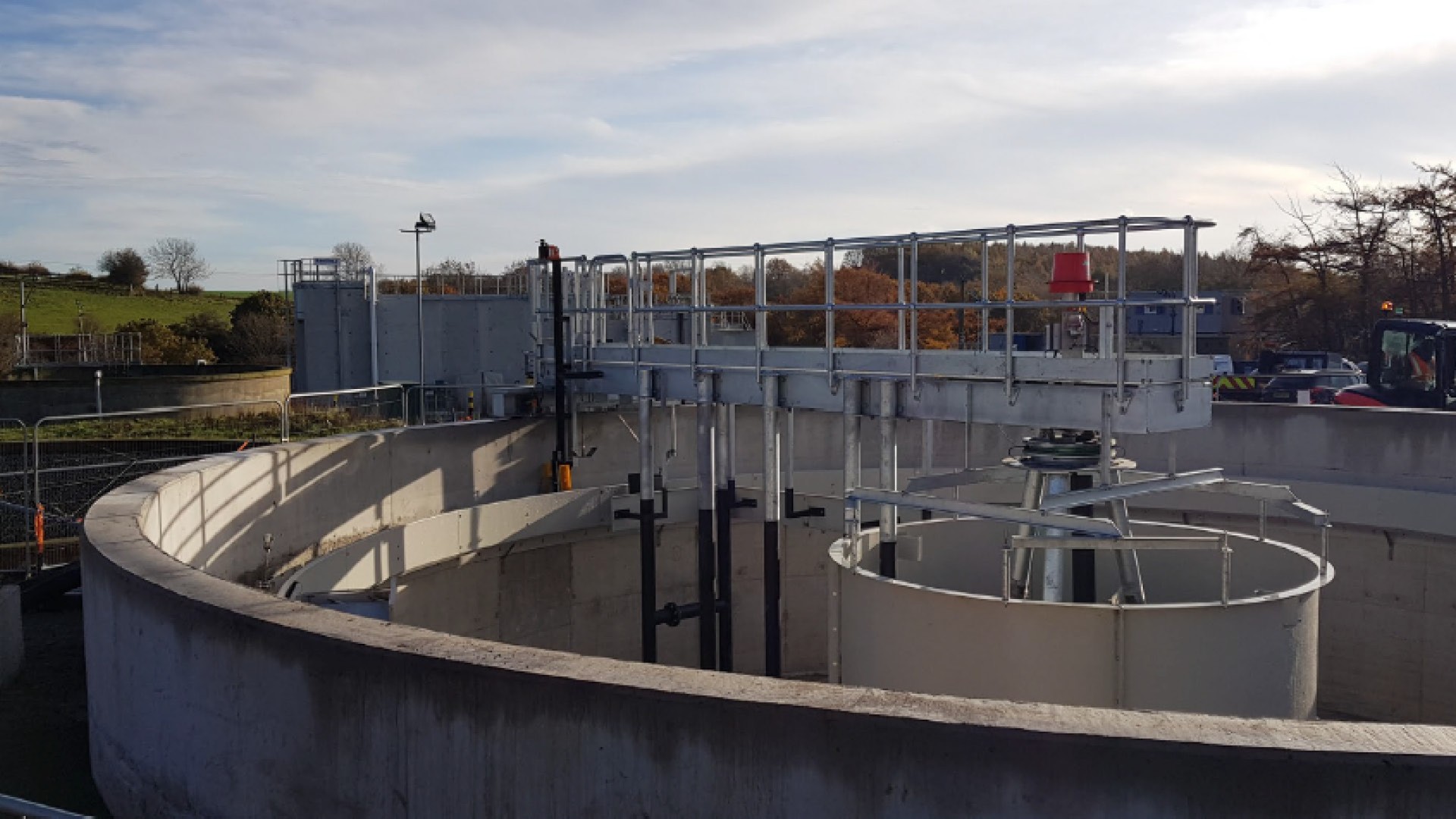
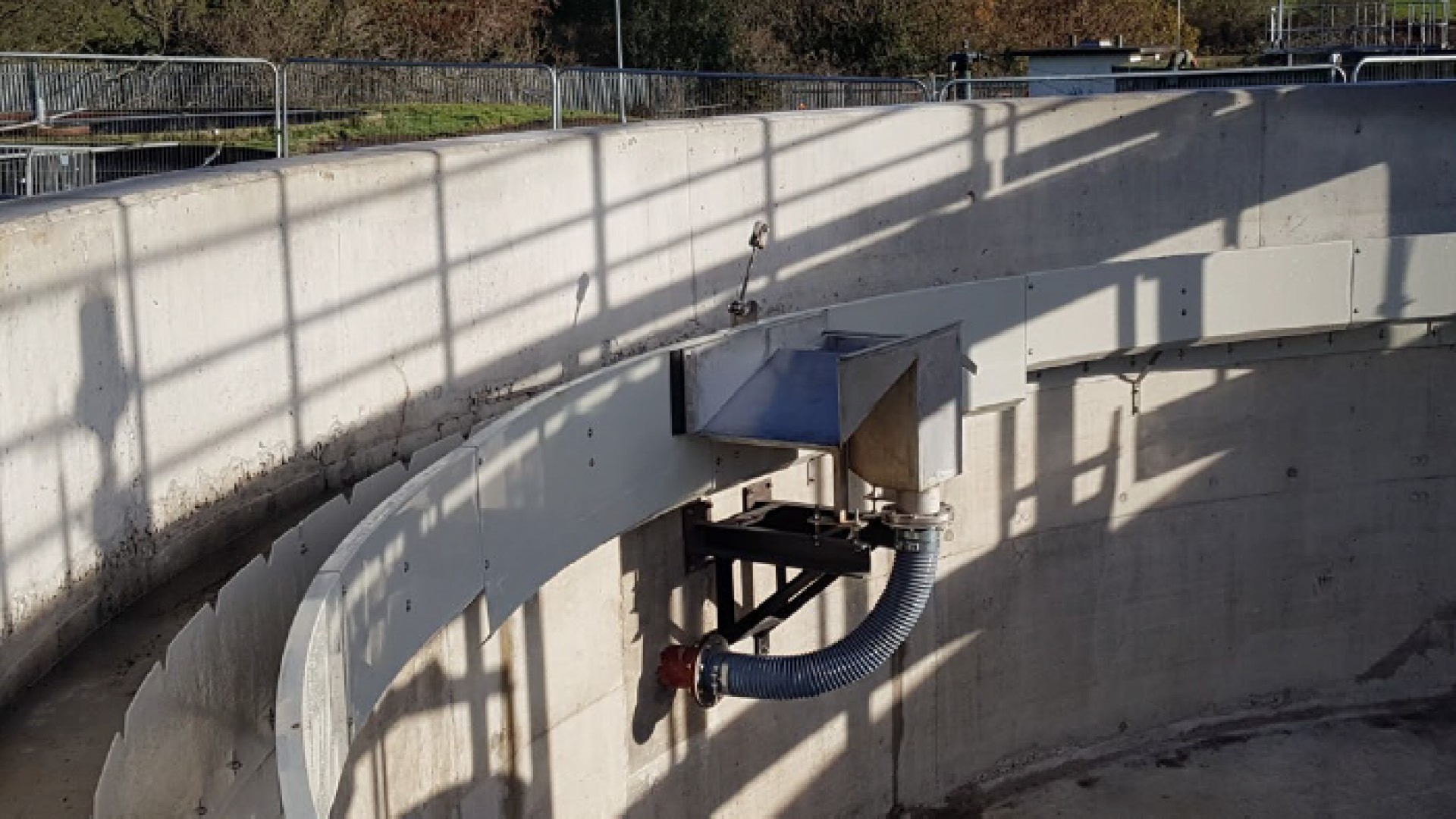
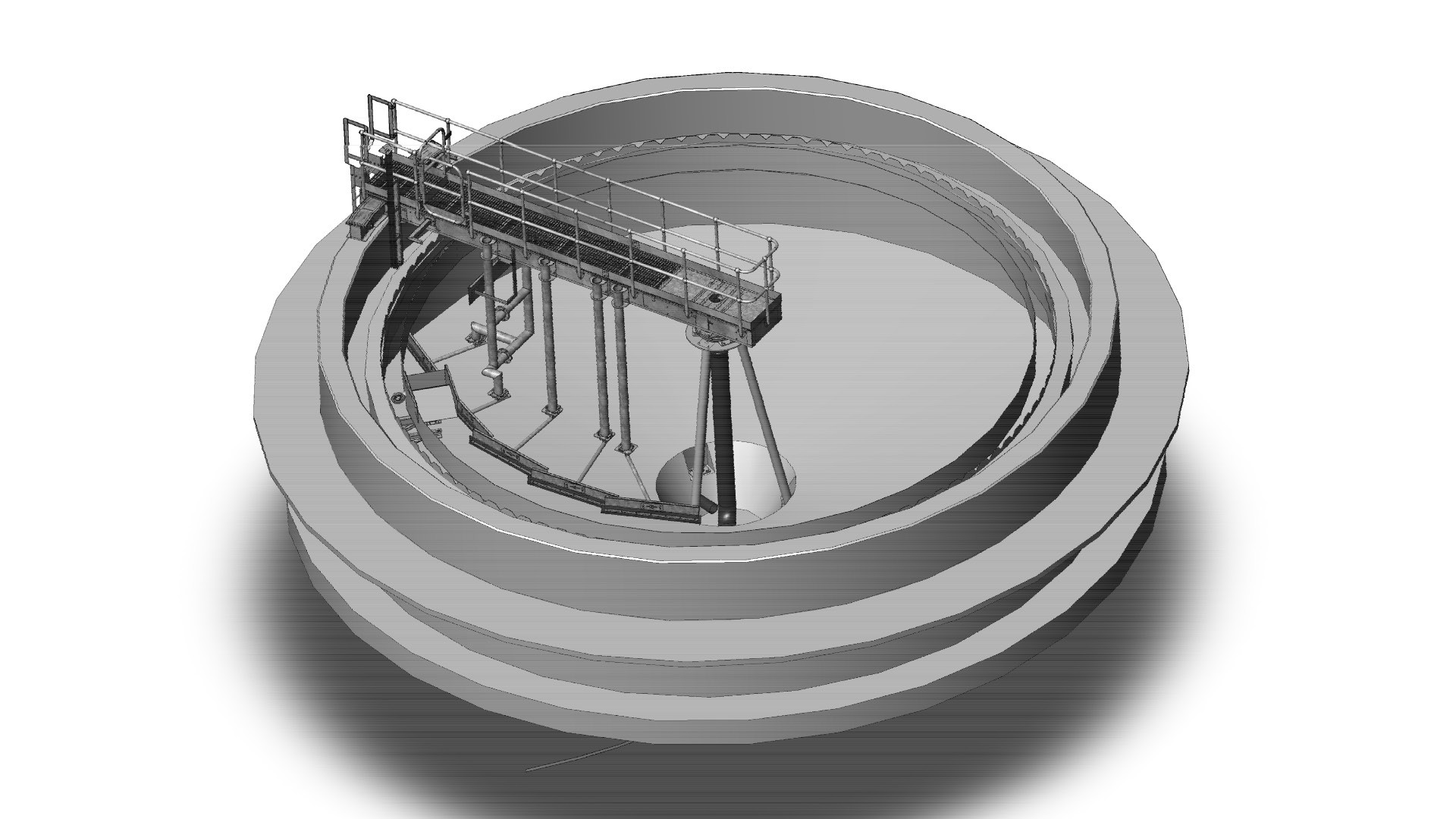
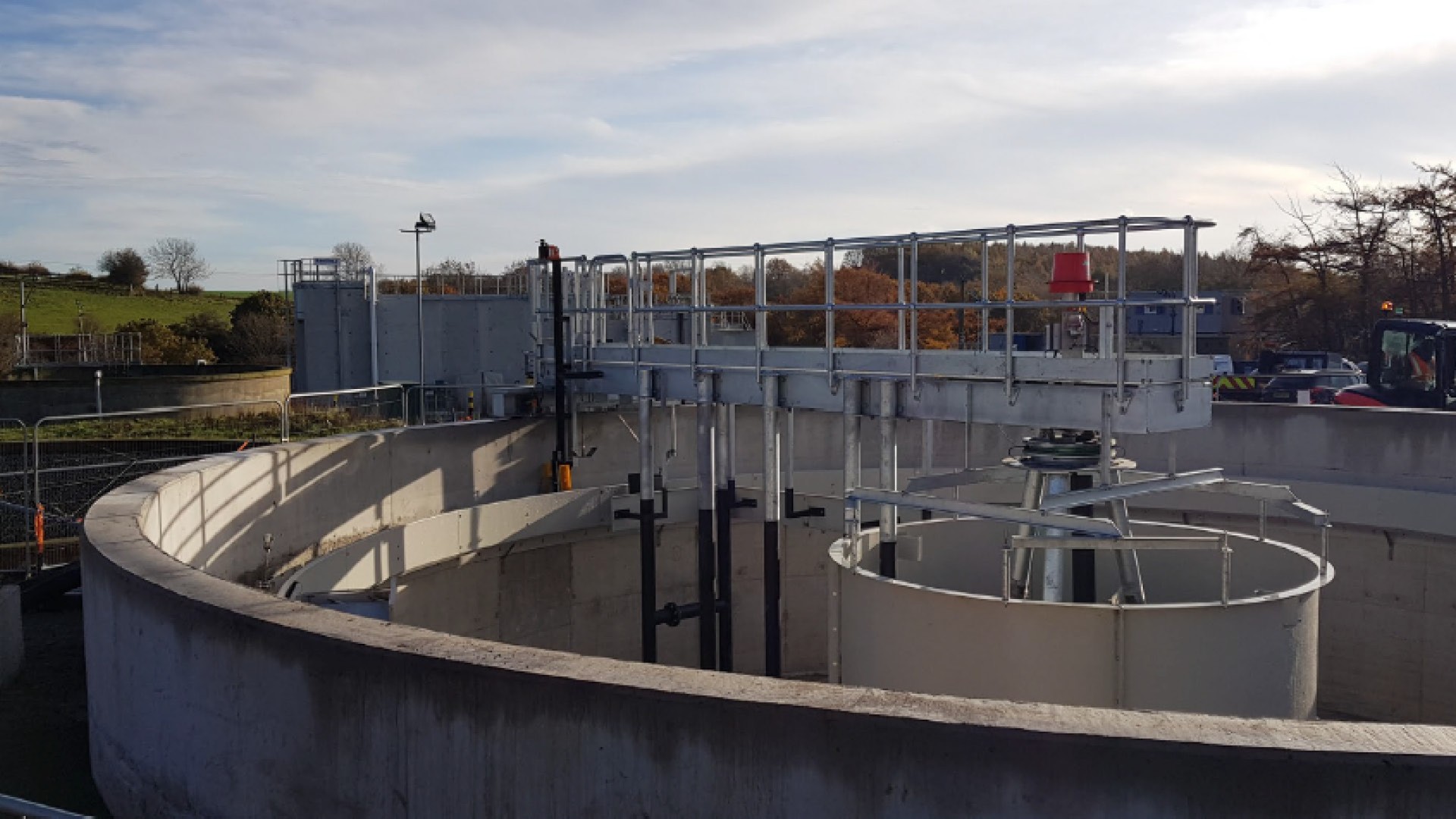
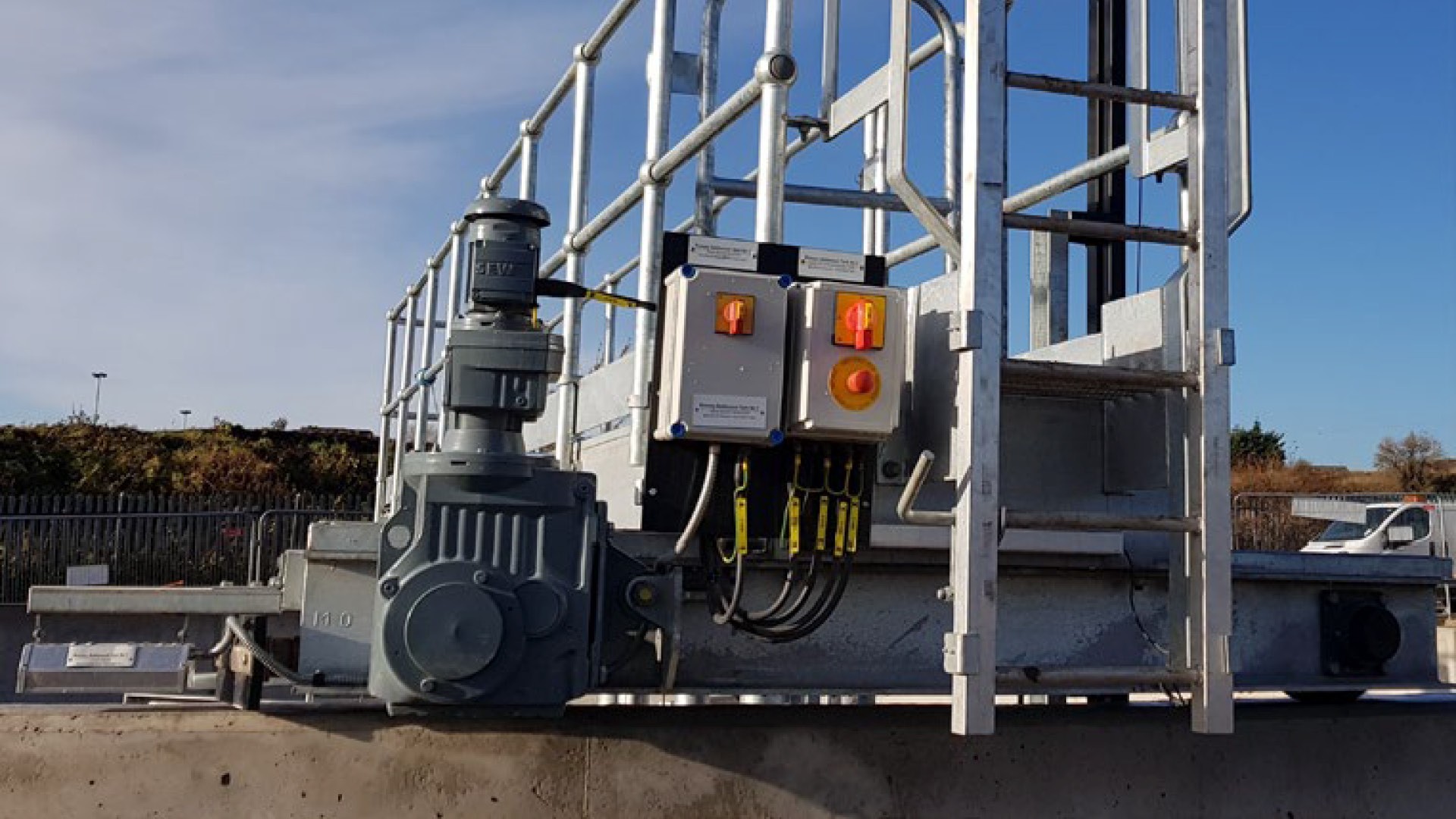
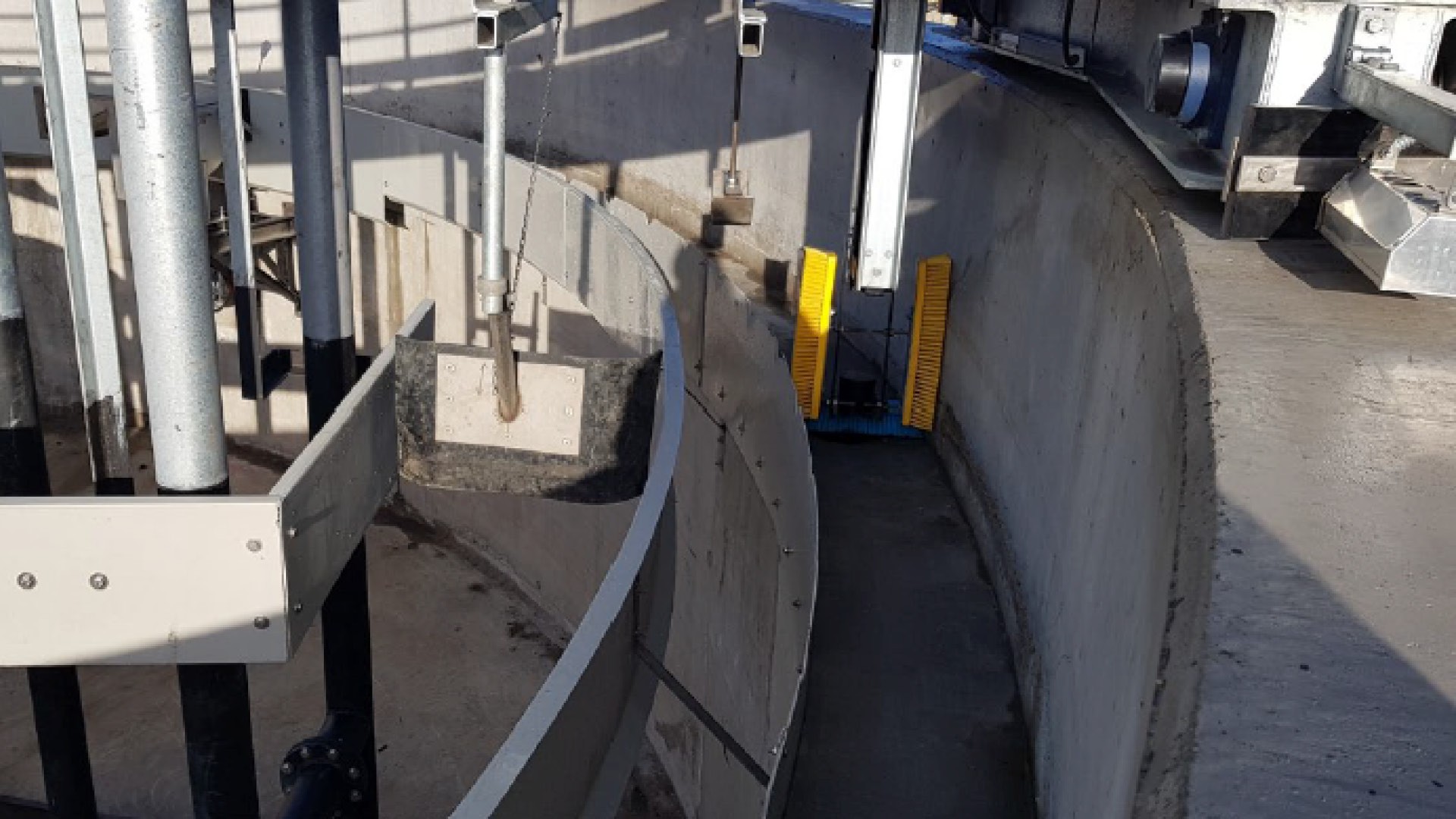
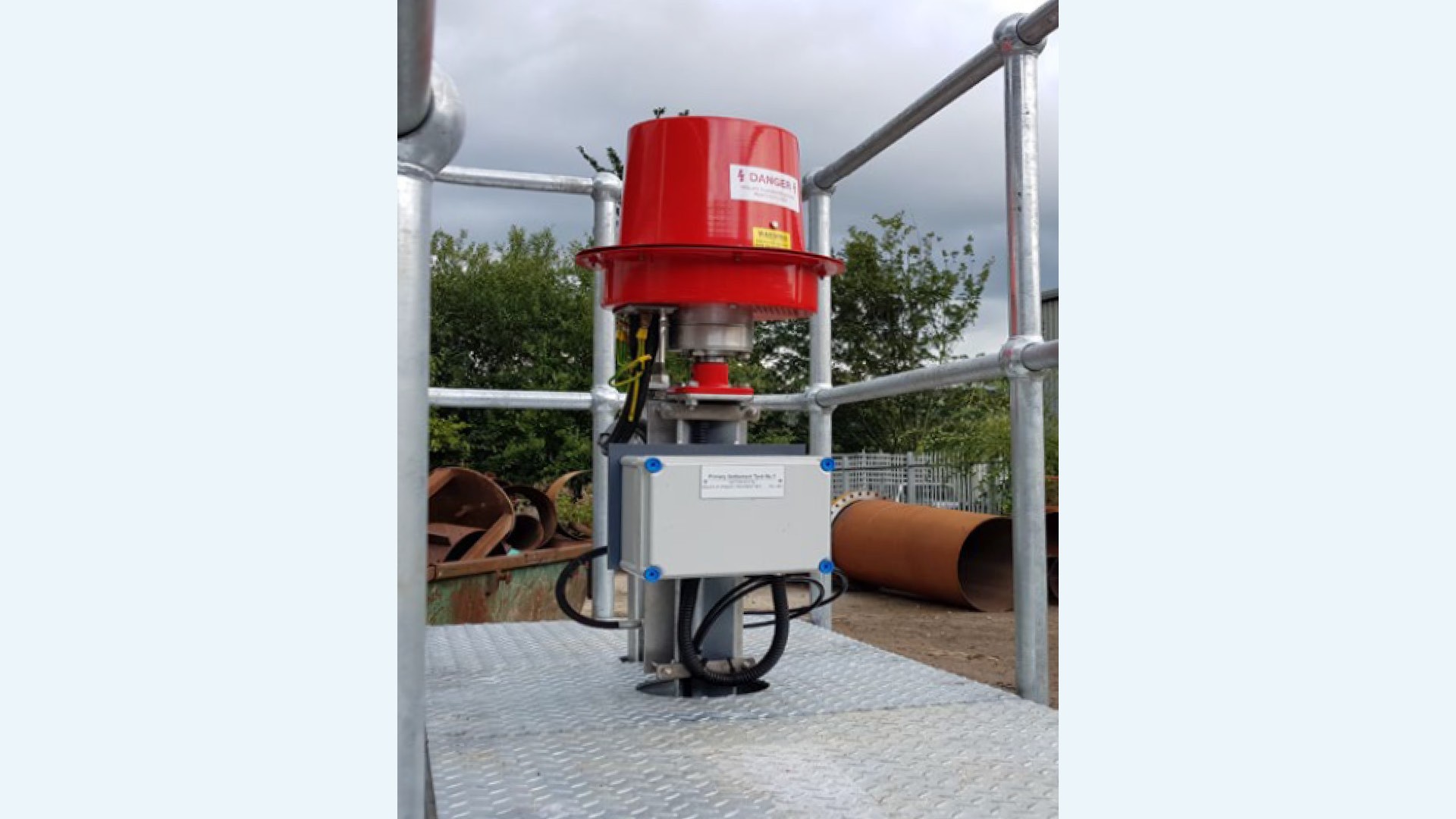
The bridge is supported at the tank centre by a tripod anchored to the tank floor. Fitted between the bridge and tripod is a trunnion assembly, which allows for slight deviations in the tank wall height. A diffuser drum is suspended from the bridge at the tank centre, to diffuse the inlet flow into the tank.
Bridge rotation is driven by a carriage mounted to the bridge at the tank periphery, a drive wheel runs centrally on the tank wall, and an idle wheel helps support the bridge. The carriage assembly has replaceable tyres, the drive carriage uses a geared motor unit to power the wheel. The most effective method of monitoring torque is to monitor the current draw on the motor itself as this is in direct linear correlation with the torque output from the gearbox (with the appropriate calibration). As the motors used on the SEW drives are synchronous constant speed units, the monitoring system would, in essence comprise of a transformer, a relay and a MCC mounted display (either digital or analogue) reading a kN-m figure.The transformer drives the display and the relay will disable the motor should the current draw exceed a pre-set amount.
Suspended from the bridge are the scraper blades, which are arranged to scrape the tank floor sediment into the central collection hopper. The blades are fitted with renewable wearing edges. Also suspended from the bridge is the scum blade. The scum blade sweeps the floating scum on the water surface to the periphery of the tank, where the scum removal device is able to collect it.
The end carriage is a mild steel fabrication and bolts directly onto the bridge structure. The drive unit is mounted on the leading edge of the carriage with a trailing unit mounted on the rear. The drive and trailing wheels are of cast iron and are fitted with polyurethane tyres of approximately 300mm diameter. Both wheels are fitted with cover guards, A snowplough unit is arranged to clear snow/debris from the leading wheel.
The drive unit comprises a motor and helical gearbox. The drive motor is mounted on the end carriage with the gearbox flange-mounted to it and the drive wheel on the output shaft from the gearbox. Fitted to the trailing unit is a rotation monitor to detect loss of motion on the bridge. When the rotation monitor fails to detect the targets within a preset time the motor will stop. The trailing unit is similar to the drive unit without the drive arrangements.
To prevent damage or undue stress from slight undulations encountered by the wheels on the peripheral running surface of the tank wall a centre pivot is provided along with a trunnion mounted slewing ring. The slewing ring and trunnions are fitted with a piped lubrication system, which terminates on the bridge to provide easy access for lubricating purposes.
The centre pivot assembly is mounted on the fabricated mild steel tripod assembly. A diffuser drum is suspended from an PF Channel assembly attached to the rotating bridge. The diffuser drum is provided with baffled scum outlet. The inlet piping enters the tank at the central hopper and rises, vertically supported on a duckfoot bend.
KEY FEATURES:
OPTIONAL FEATURES:







The trailing arm scrapers comprise tubular arms hinged from the bridge. The scrapers are positively located by the arms but are free to rise and fall in response to undulations in the tank floor level. The scrapers are bolted to supports hung from the rotating bridge structure. The scraper blades are on galvanised mild steel fitted with easily re-newable wearing edges. On the new Tank the scrapers are arranged on a echelon pattern over the full radius of the tank floor. The scraper blades are of mild steel, fitted with easily renewable rubber wearing strips, arranged to scrape the radius of the tank floor.
To prevent surface scum from flowing over the outlet weir, a scum baffle plate extends around the full periphery of the tank and is located approximately 300mm from the inside of the weir wall. The plates are secured by brackets.
The fabricated scum blade is hung from the side of the bridge structure (angle brackets) & works in conjunction with the scum baffle plate to form two sides of a scum catchment chamber as the bridge rotates. The scum is directed towards the periphery of the skimming blade to be deposited into the scum removal unit once per rotation.
The scum removal unit is mounted on the launder channel so that as the bridge passes over, the scum board allows the scum to be deposited into a collection box. A cam hanging of the bridge activates the cylindrical collection box, allowing the scum to be deposited through the collection opening & flushed away.
A central electrical collector column is mounted at walkway height and contains the slip ring assembly, which communicates power from a static external supply to the rotating bridge drive unit.
The slip ring assembly comprises of Brass slip rings and double leg, light duty brush holders (callipers) fitted with copper graphite brushes suitable rated. The bottom ring/brush is permanently earthed to the shaft and base to provide continuous bonding.
The unit comprises a series of brushes fitted to support brackets to clean the effluent channel sidewalls and weir top and rear of the weir plates as the bridge rotates. There are also offset brushes, which rest on the channel floor, from a pivoted bracket.
The bridge can only be restarted by releasing the emergency stop button by depressing the button whilst twisting it to the left. The button is spring-loaded to return to its original position.
To discuss rotating half bridge scrapers or find out how George Green can help your business, please get in touch.
Get in touch